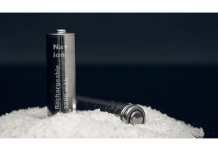New model predicts ten year breast cancer risk.
A team of researchers at the University of Oxford, led by the Nuffield Department of Primary Care Health Sciences, have developed a new model that reliably predicts a woman’s likelihood of developing and then dying of breast cancer within a decade.
The study, published today in The Lancet Digital Health, analysed anonymised data from 11.6 million women aged 20-90 from 2000 to 2020. All of these women had no prior history of breast cancer, or the precancerous condition called ‘ductal carcinoma in situ’, or DCIS.

Breast cancer screening is vital but has challenges. While it reduces breast cancer deaths, it sometimes detects tumours that are not harmful (‘overdiagnosis’), which leads to unnecessary treatments. This not only harms some women, but also causes unnecessary costs to the NHS. For every 10,000 UK women aged 50 years invited to breast screening for the next 20 years, 43 breast cancer deaths are prevented by screening, but 129 women will be ‘overdiagnosed’.
‘Risk-based screening’ aims to personalise screening based on an individual’s risk, to maximise the benefits and minimise the downsides of such screening. Tailoring screening programmes on the basis of individual risks was recently highlighted as an avenue for further improvement in screening strategy by Prof Chris Whitty (https://www.gresham.ac.uk/watch-now/medical-screening). Currently, in risk-based breast screening, most models of risk work by estimating a woman’s risk of a breast cancer diagnosis. However, not all breast cancers are fatal, and we know that the risk of being diagnosed doesn’t always align well with the risk of dying from breast cancer once diagnosed.
The new model developed by the team works to predict a woman’s 10-year combined risk of developing and then dying from breast cancer. Identifying women at the highest risk of deadly cancers could improve screening. These women could be invited to start screening earlier, be invited for more frequent screenings, or be screened with different types of imaging. Such a personalised approach could further lower breast cancer deaths while avoiding unnecessary screening for lower-risk women. Women at higher risk for developing a deadly cancer could also be considered for treatments that try to prevent breast cancers developing.
Professor Julia Hippisley-Cox, Professor of General Practice and Epidemiology and senior author from the Nuffield Department of Primary Care Health Sciences at the University of Oxford, said: ‘This is an important new study which potentially offers a new approach to screening. Risk-based strategies could offer a better balance of benefits and harms in breast cancer screening, enabling more personalised information for women to help improve decision making. Risk based approaches can also help make more efficient use of health service resources by targeting interventions to those most likely to benefit. We thank the many thousands of GPs who have contributed anonymised data to the QResearch database without which this research would not have been possible.’
The researchers tested four different modelling techniques to predict breast cancer mortality risk. Two were more traditional statistical-based models and two used machine learning, a form of artificial intelligence. All models included the same types of data, like a woman’s age, weight, history of smoking, family history of breast cancer, and use of hormone therapy (HRT).

The models were evaluated for their ability to predict risk accurately overall, and across a diverse range of groups of women, such as from different ethnic backgrounds and age groups. A technique called ‘internal-external cross-validation’ was used. This involves splitting the dataset into structurally different parts, in this case, by region and time period, to understand how well the model might transport into different settings.
The results showed that one statistical model, developed using ‘competing risks regression’ performed the best overall. It most accurately predicted which women will develop and die from breast cancer within 10 years. The machine learning models were less accurate, especially for different ethnic groups of women.
Dr Ashley Kieran Clift, first author and Clinical Research Fellow at the Nuffield Department of Primary Care Health Sciences, University of Oxford, said: ‘Funded by Cancer Research UK and taking advantage of the size and richness of the QResearch database with its linked data sources at the University of Oxford, we were able to explore different approaches to develop a tool that might be helpful for new, risk-based public health strategies.
‘If further studies confirm the accuracy of this new model, it could be used to identify women at high risk of deadly breast cancers who may benefit from improved screening and preventative treatments.’
Professor Stavros Petrou, co-author and Health Economics Lead in the Nuffield Department of Primary Care Health Sciences, University of Oxford, said: ‘This paper took a new approach and asked, “can we predict which women are at highest risk of developing a cancer that will kill them?” We could use that information to better target screening or even for prevention strategies to those who stand to benefit the most.
‘Further evaluation of the competing risks model should include assessment of the models in a different setting, such as another dataset from the UK or abroad.’
The full paper, ‘Predicting 10-year breast cancer mortality risk in the general female population in England: a model development and validation study‘, can be read in The Lancet Digital Health.























